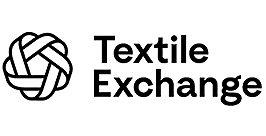 LAMESA, Texas — December 12, 2023 — With 394 participating brands and retailers, and 52 suppliers and manufacturers, Textile Exchange’s Materials Benchmark is the largest peer-to-peer comparison initiative in the fashion, textile, and apparel industry.
LAMESA, Texas — December 12, 2023 — With 394 participating brands and retailers, and 52 suppliers and manufacturers, Textile Exchange’s Materials Benchmark is the largest peer-to-peer comparison initiative in the fashion, textile, and apparel industry.
By providing a standardized framework for companies to fill in, the program creates consistency in their sustainability reporting at the materials level. It tracks the uptake of preferred fibers and raw materials, and how companies are addressing areas like circularity, biodiversity, land, freshwater, and forests.
The results capture trends in the data from participants, helping to create a better understanding of the state of the sector and the solutions needed. This year, we are sharing the key trends in two parallel reports. The first covers brands and retailers, and the second looks at suppliers and manufacturers.
Key trends for brands and retailers
Participants are scaling their sustainability strategies for raw materials.
- The majority of participants (95 percent) have incorporated a raw materials sustainability strategy and/or ad-hoc activities into their business operations.
Brands are starting to address climate impacts through goal setting and risk assessment.
- Although measuring climate and nature impacts is still a relatively new area for some companies, participants are defining goals (64 percent of participants have set science-based targets for climate) and assessing the associated risks.
Sustainability programs and standards represent accessible solutions, but there is more to do.
- There is room for progress and improvement when it comes to transitioning key materials to preferred sources. For materials where preferred options prevail — such as cotton and mohair — sustainability programs, initiatives, and certifications are the most used solutions to facilitate the shift.
Further progress is needed in the transition to a more circular economy.
- 50 percent of participants reported taking action to decouple value creation from the extraction of new raw materials. This primarily included extending the lifespan of existing products and materials through service-based business models and using post-consumer recycled textiles. Additional efforts are needed to make these business models profitable, embed circular practices in the product design phase, and develop new solutions to collect and sort pre- and post-consumer waste.
Further visibility to the countries where fibers and raw materials are produced is a must.
- Traceability to the raw materials level is relatively low, with 80 percent of participants not knowing the origin of their raw materials. Improving visibility to country of origin will be foundational to managing risks and identifying opportunities for impact reduction. It will also soon be a more common requirement within various reporting and disclosure frameworks.
Key trends for suppliers and manufacturers
- Suppliers are setting strategies for materials sustainability, with risk assessments needed next.
- Companies are setting strategies, building internal capacity, and working closely with stakeholders. However, almost half of the participants do not yet conduct risk assessments related to raw materials.
- Measuring impacts is a relatively new area for participants.
- Only 25 of 52 participants filled in this section of the survey. Some are measuring their impacts on climate and nature through greenhouse gas calculations and life cycle assessments (LCAs). However, further progress can be made to address these impacts, particularly through the adoption of sustainable sourcing practices and restrictions.
Participants are using more preferred materials but need to focus on key fiber types.
- Preferred raw materials account for 52 percent of all raw materials reported by suppliers and manufacturers. Another 5 percent comes from recycled sources, leaving the percentage of conventional materials used at 43 percent. However, for some of the most common fiber types — such as cotton and polyester — conventional practices still prevail. In contrast, materials that are reported in smaller volumes such as cashmere, flax, and hemp mostly come from preferred sources.
There is untapped potential for suppliers to become leaders in circular solutions.
- Suppliers and manufacturers are making progress in establishing circularity strategies. The primary focus appears to be recycling post-consumer waste, but there is a wealth of unexplored potential to further develop and expand efforts in terms of circularity.
Posted: December 12, 2023
Source: Textile Exchange




